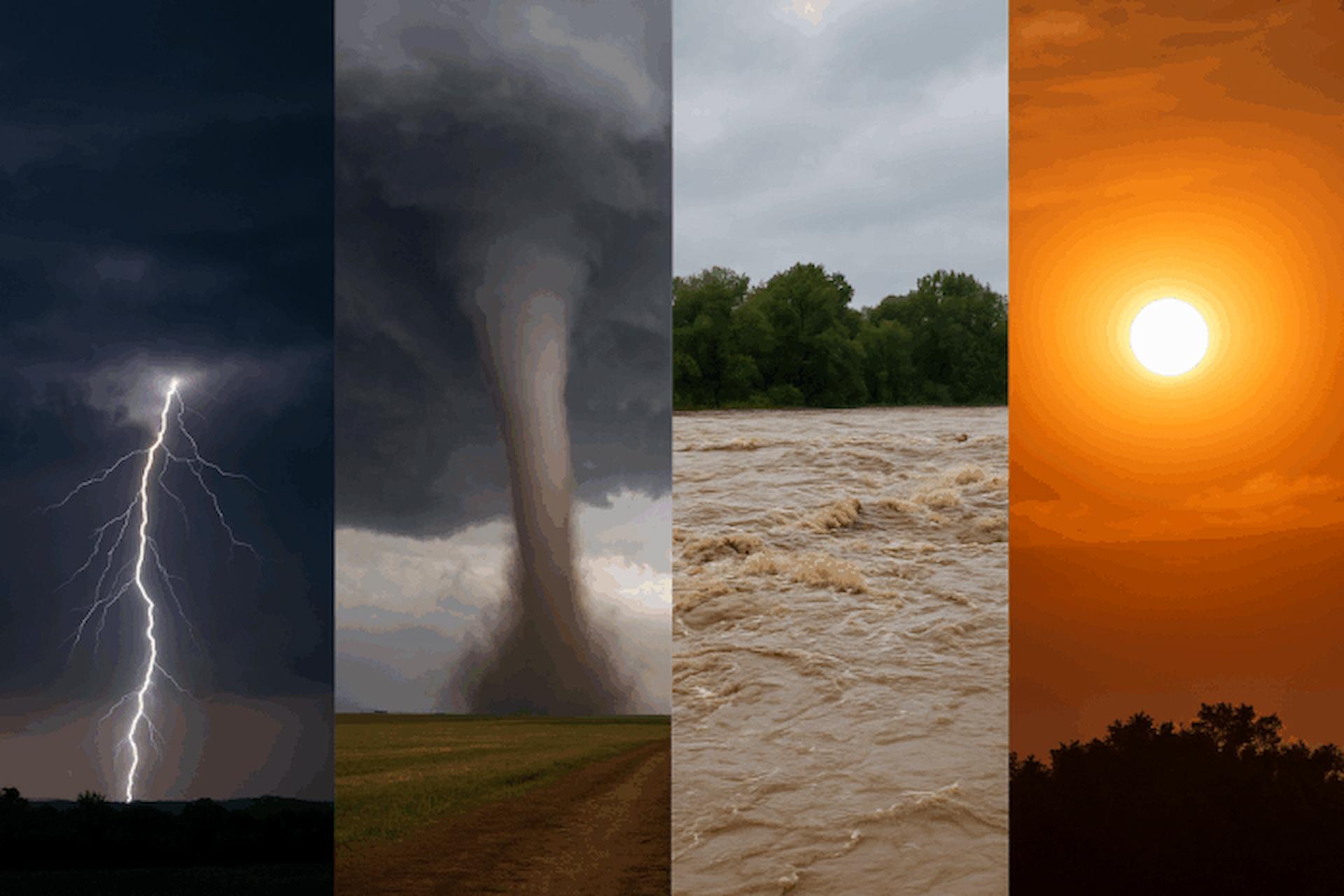
Introduction
From fire tornadoes to blood rain, the planet has seen some truly bizarre weather events in recent years. While these strange occurrences might sound like scenes from a science fiction movie, many of them have real scientific explanations—and an undeniable link to climate change. As global temperatures rise and weather patterns shift, these unusual phenomena are becoming more frequent and intense. Let’s explore 12 weird weather phenomena and how climate change is amplifying their impact around the world.
1. Fire Tornadoes – When Flames Spin Like Cyclones
A fire tornado, or “firenado,” occurs when intense heat and turbulent wind combine, creating a whirling column of fire. These fiery vortices were once rare, but wildfires intensified by climate change are making them more common, as seen during California’s record-breaking 2020 fire season.
2. Blood Rain – When the Sky Turns Red
“Blood rain” occurs when red dust or sand mixes with rainwater, giving the precipitation a reddish hue. This phenomenon often happens in places near deserts, such as the Mediterranean. Increasing desertification due to global warming contributes to more airborne dust and, consequently, more frequent blood rain events.
3. Ball Lightning – A Mysterious Glow in the Sky
Ball lightning is a rare spherical flash that can appear during thunderstorms. Scientists believe it’s caused by electrical discharges in the atmosphere. Though not directly caused by climate change, the growing intensity of storms may increase its occurrence.
4. Ice Tsunamis – Walls of Ice Pushed by Wind
Ice tsunamis, or “ice shoves,” occur when strong winds push broken ice chunks from lakes or seas onto the shore, creating walls up to 40 feet high. Rising global temperatures and unstable ice sheets are increasing the unpredictability of these chilling events.
5. Green Lightning – The Electric Sky Glow
Seen during volcanic eruptions or intense storms, green lightning is caused by electrically charged ash and gases. As global warming fuels more severe storms and volcanic activity, these rare electric displays may become more frequent.
6. Supercells – The Monsters Behind Tornadoes
Supercells are massive thunderstorms with rotating updrafts. They can spawn tornadoes, hail, and flash floods. Climate change enhances the warm, moist air that fuels these storms, potentially making them more dangerous and widespread.
7. Atmospheric Rivers – Skyborne Waterfalls
Atmospheric rivers are long streams of moisture that transport huge amounts of water vapor across continents. When they make landfall, they release torrential rain. Warming oceans intensify these “rivers in the sky,” causing extreme flooding in regions like California.
8. Haboobs – Giant Dust Storms
Originating from Arabic for “blown,” haboobs are large dust storms triggered by collapsing thunderstorms. Rising global temperatures dry out soil, increasing the frequency and strength of these choking storms in arid regions.
9. Thundersnow – Lightning During Snowstorms
Thundersnow is a rare occurrence when lightning and thunder accompany snowfall. It’s caused by rapidly rising warm air in cold environments. As temperature extremes intensify, this once-rare event may become more familiar in mid-latitude regions.
10. Heat Domes – Trapping Scorching Air
A heat dome forms when a high-pressure system traps hot air over a region, causing record-breaking heat waves. Recent heat domes across North America and Europe highlight how global warming intensifies both duration and severity.
11. Polar Vortex Shifts – The Cold Comes South
The polar vortex is a massive ring of cold air around the poles. Warming Arctic temperatures disrupt this system, pushing icy air into regions like the U.S. and Europe, leading to extreme winter events despite global warming.
12. Rainbow Clouds – Beauty Born of Pollution
Also known as iridescent clouds, these form when sunlight refracts through tiny ice crystals or pollutants. As human activities increase atmospheric particulates, the likelihood of these colorful clouds grows, blending beauty with warning.
Conclusion
Weather has always been unpredictable, but climate change is making it weirder and wilder. Each of these phenomena—whether fiery, icy, or electric—reminds us of Earth’s delicate balance and the urgent need to address global warming. Understanding these patterns helps us prepare, adapt, and protect our planet before the “new normal” becomes irreversible.

